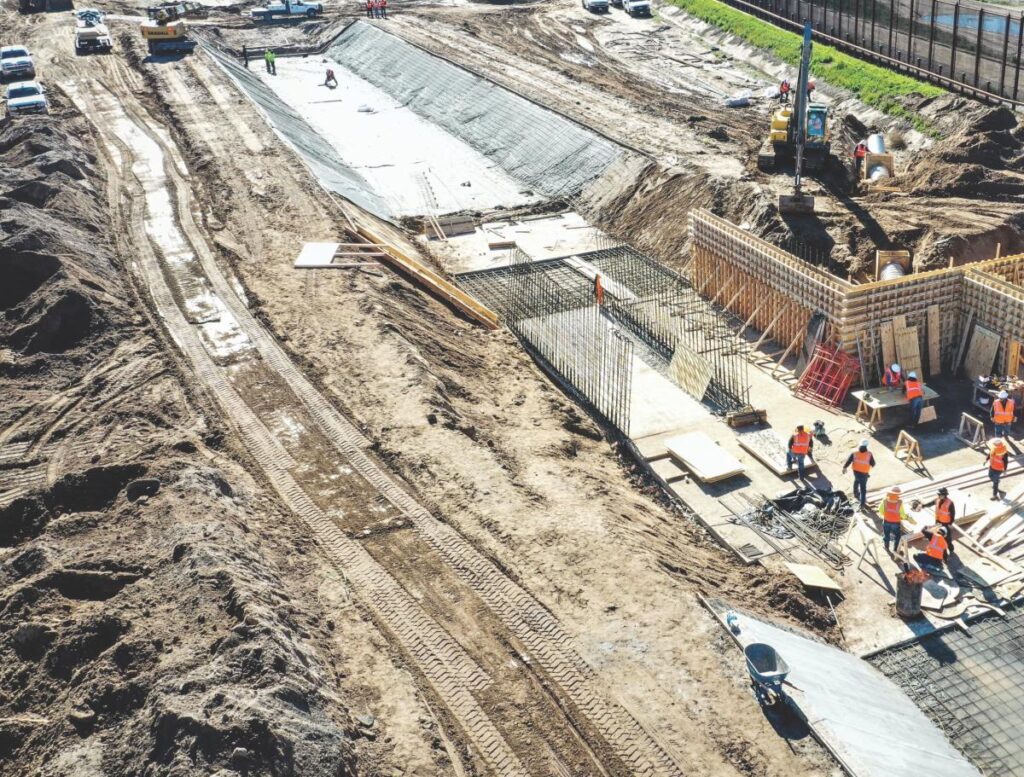Photo courtesy of TxDOT
The study, which converted time savings from smoother commutes into dollar values and coupled those benefits with average fuel cost savings, also found the most significant savings in the state’s biggest cities, included Austin, Dallas, Fort Worth, Houston and San Antonio.
Commuters across Texas reaped time and cost savings valued at more than $3 billion, thanks to transportation improvements and pandemic-related trends that made their drives quicker than just a few years ago, according to a new report from the Texas A&M Transportation Institute (TTI).
The report analyzed commuting trends and compared them to pre-pandemic levels in 2019. The study found that, while motorists drove more miles last year, roadway construction and expansion projects like those in TxDOT’s Texas Clear Lanes — a Gov. Greg Abbott initiative — helped make travel smoother and more efficient.
The study, which converted time savings from smoother commutes into dollar values and coupled those benefits with average fuel cost savings, also found the most significant savings in the state’s biggest cities, included Austin, Dallas, Fort Worth, Houston and San Antonio.
The findings are drawn from TTI’s legislatively mandated annual analysis, which measures traffic delays in more than 2,100 of the most congested road segments in the state.
“It’s encouraging to see the impact our work is having on Texas roads throughout the state to help ease congestion,” TxDOT Executive Director Marc Williams said. “But our work isn’t done. As more and more people move to Texas, we need to keep moving forward with projects that address traffic congestion and improve safety in areas that need it most.”
Roadbuilding continued at a brisk pace in recent years, highlighted by the $100 billion 2024 Unified Transportation Program (UTP) and TxDOT’s Texas Clear Lanes initiative. Through that effort, TxDOT has invested more than $32 billion to plan, construct and complete non-tolled projects in the state’s largest population centers since 2015. Overall, 18 Texas Clear Lanes projects are now complete, 25 are under construction, and another 62 are planned.
This annual study puts Houston’s West Loop atop the most congested list for the second consecutive year. Also in Houston, the Eastex Freeway comes in second place, followed by Dallas’ Woodall Rogers Freeway, Austin’s I-35 through downtown, and the Southwest Freeway in Houston.
Nine of the 10 most congested road segments in the state were repeats from the year before. And in each of the last four years, at least 83 of the 100 most congested segments were concentrated in the four largest urban areas (Houston, Dallas-Fort Worth, Austin and San Antonio).
“As we would expect, nearly all of the 100 most congested road segments are in the state’s largest urban areas,” Texas Transportation Institute Senior Research Scientist David Schrank said. “But a deeper look at the full listing clearly illustrates how congestion is not just a big city problem. Traffic delays impact our economy and our well-being no matter where we live.”
Overall traffic delays statewide last year were up 7 percent over 2021 conditions. Even with last year’s increase, 2022 estimates of overall delay were still 23 percent lower than in 2019, a comparison even more noteworthy due to the fact overall traffic volume on roadways has increased 2 per ent compared to 2019. Truck delays, on the other hand, were up 15 percent over 2021 and 1 percent higher than three years before.
As completed projects provide a more efficient rush hour, researchers also point to pandemic-related trends that have helped reduce roadway delays. Flexible workplace schedules continue to shape a new commuting standard. In addition, consumers are relying more on home delivery of goods.
Read the full article here











